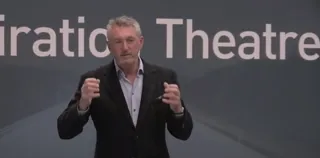A year ago, we began by noting that the difficulties of 1998 had come as a shock to many because the residuals from some forecasters had been considerably more optimistic than turned out to be justified.
That was because those forecasters had been working in the heady atmosphere of the mid-90s, when the market was booming.
We made the point that conditions today are not necessarily relevant to those three years hence, prompted by the fact that, because 1998 was a struggle, some forecasters were again projecting their current experience forward, based on current market conditions and assuming that residuals would continue to fall.
Now, as we bid farewell to the decade, it provides an opportunity to look back over an interesting economic cycle. It reveals just how dangerous it is to base assumptions on prevailing conditions and also demonstrates exactly how dramatically those conditions can change in a relatively short time. As we have often pointed out, a large element in the science and art of setting future residuals is accurately forecasting those economic circumstances.
The early part of the 90s was a dramatic and volatile time for the UK economy, with a 'double dip' recession.
As a used car sales specialist at the time, I would probably have been a little sceptical of forecasts which painted a boom time just around the corner but that is exactly what emerged from those tough days. It was in that long period of recession that the seeds for the following boom were sown: the damage caused to new car sales led to relatively low used car supplies just as the economy began to grow once more.
That magic ingredient combined with rising demand to force up used car values in a swing that was not to peak for four years and which would continue into 1998. So when major fleet operators panic about their residuals, it is a reminder of basic human nature and the way in which it can lead us to lose sight of the bigger picture.
In this case, that picture is of residuals which, at the beginning of year 2000, stand 30% above the start of the last decade.
This probably sounds like cold comfort to anybody who has suffered through last year's difficult market. Therefore, it is appropriate to close on a brief look into the future and how we are viewing residuals for 2003.
Again, it is a combination of factors which gives the clue. First, our view of the economy is of continued growth and rising demand. Leaving aside unknowable factors, such as anti-manufacturer campaigns in the media, there is every reason to believe that a good share of the nation's growing wealth will find its way into used cars. But perhaps even more excitingly it is developments within the motor industry which will help to fuel this demand.
While I am conscious of a growing fragmentation of the typical sectors, overall residuals will be higher than they are today. The C sector will continue to grow in importance, with its impressive specs and overall product quality.
The new breed of larger supermini will also find favour in the used market and even the upper medium sector is due to wake from its slumber. Here is where some of the most exciting developments will come, in terms of new product.















Login to comment
Comments
No comments have been made yet.